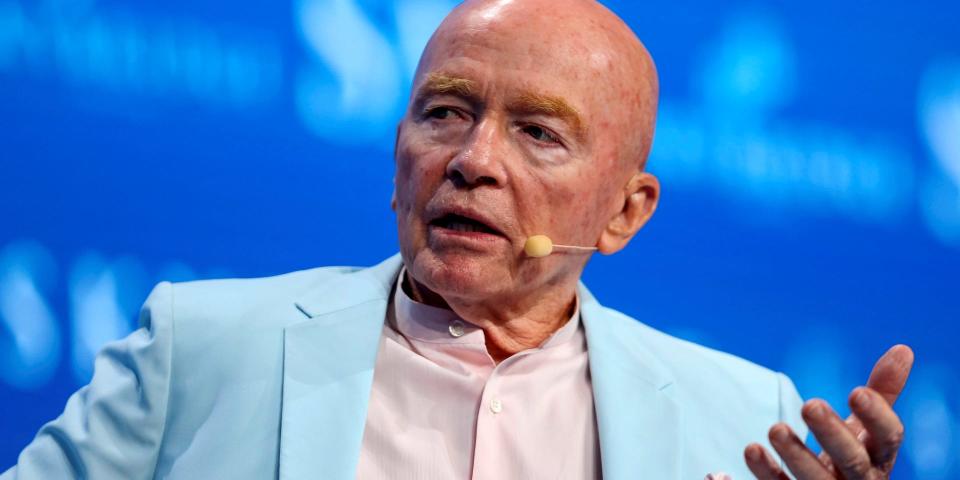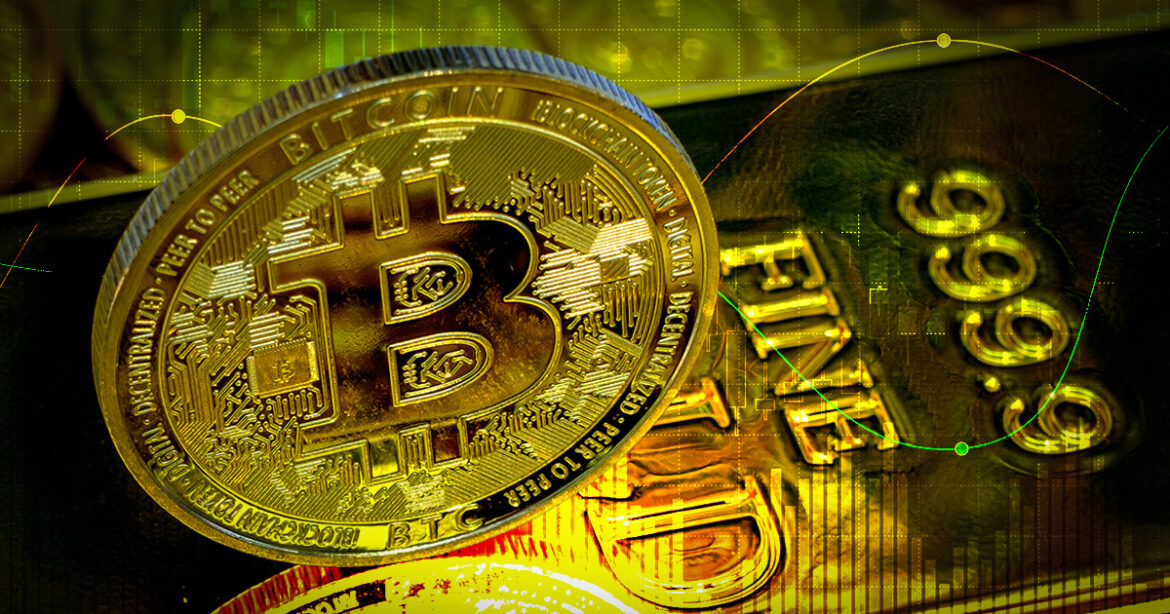When did these serial defaulters become bastions of economic resilience? writes Kenneth Rogoff.
Source link
emerging
While the United States and Europe clamp down on crypto, new hubs are flourishing in the Asia Pacific region. Hong Kong recently opened its doors to crypto trading, and Vietnam and India were crowned the top crypto adopters in 2022.
For companies eager to enter these booming markets, bulletproof KYC processes and localized onboarding experiences aren’t just important—they’re non-negotiable.
APAC’s Emergence as a Crypto Powerhouse
In June, Hong Kong rattled the crypto market when it passed a law allowing individual trading exchanges and platforms to apply for crypto trading licenses. Until now, this was restricted to institutional investors and other professionals.
The move came after the city was named the most crypto-ready, due to the high number of blockchain startups and crypto ATM installations relative to the population size. In August, Hong Kong granted its first licences to HashKey Exchange and OSL Digital Securities, and retail investors can now register to trade BTC and ETH.
Meanwhile, India’s young and tech-savvy population has embraced cryptocurrency wholeheartedly, with even a tea vendor accepting payments in crypto. According to the 2022 Global Crypto Adoption Index, India is the world’s fourth-largest cryptocurrency market before the United States.
In South East Asia, Vietnam stands out as a crypto hotbed. As of 2022, 5 million Vietnamese use cryptocurrency, and this number is expected to increase by 60% in the next 5 years. In fact, Vietnam has ranked first on Chainalysis’ Global Crypto Adoption Index for two years in a row.
For crypto companies stumped by the 2022 bear market and tight regulatory nooses, APAC is the place to be. But entering a new market is no easy feat. How can you comply with local regulations while also getting enough signups, conversions, and revenue?
Localized signup: A New Standard in the Crypto Boom
When entering a new market, standard KYC processes like ID card scanning, proof of address, and bank statement verifications are just the tip of the iceberg. To boost conversions and make your mark as a crypto leader, you need to have robust, localized signup flows.
But localization doesn’t just mean having the right translations; it usually means a combination of locally adapted UX and country-specific data sources. When a user signs up to your crypto trading platform, it’s important that they can input information according to the local norms and complete identity checks with ease. The slightest difference in UX (e.g. DD/MM/YY vs. MM/DD/YY) can cause friction and lead to drop-offs and poor conversion rates.
One company that stands out in this endeavour is Checkin.com. With years of experience in working with large global corporations across the world in complex regulatory environments, Checkin.com has taken the path less travelled. Rather than adding new markets incrementally, they developed an end-to-end KYC and customer onboarding workflow that’s optimised for a global reach from day one.
Focusing on Metrics that Matter
As crypto companies strive to expand and secure their customer base, they are increasingly valuing technology and insights which helps optimize the signup flows. To prevent potential revenue losses, they are considering factors such as cognitive load, hesitation index, and device sensitivity.
1. Cognitive Load
Anything that requires users to stop and figure out what to do next is cognitive load. Minimize the amount of information on the user interface, keep the design clean and intuitive, and give laser-specific instructions on what to do next.
2. Hesitation Index
Remove any hesitation for your customers to provide sensitive information on your platform. Localise question formats, order of modules, input methods, and notifications and pop-ups to reduce friction.
3. Device Sensitivity
Your signup flow needs to be customized to work seamlessly on the device that is most used in the market. Maximize the use of native components and device capabilities for higher conversions.
These metrics, pioneered by Checkin.com, have become influential in shaping user experiences and ensuring that onboarding processes resonate with local tastes and expectations.
By focusing on these aspects, companies are complying with regional regulations and laying the groundwork for success in the diverse and dynamic APAC markets.
Spotlight on APAC-Specific UX/UI Signup Elements
Crypto companies must also pay particular attention to these UX/UI components that can change dynamically based on the market:
- Full Name: Adapt name formats to match global variations. For example, Hong Kongers usually have an English first name and Cantonese first and last names, so be sure to have the option to fill in all three.
- Mobile Number: Collect local phone formats for user ease, then convert to international format behind the scenes.
In India, mobile numbers are 10-digit numbers, with a prefix of +91 which is the same across the country. Whereas in Vietnam, mobile numbers have different prefixes at the beginning, such as 03x, 05x, 07x, 08x, and so on.
- Date of Birth: Consider the date order, digit input, and punctuation preferences per region in onboarding design. In the US, date of birth is entered as MM/DD/YY, while in most Asian countries it’s usually DD/MM/YY.
- Logins: Embrace social media logins and OTPs based on region-specific authentication trends. In India, the preferred signup and login method is OTP, instead of a standard password password.
- Address: Customise address input based on user comfort, considering postal codes, prefixes, and naming nuances. In India, addresses usually include a 6-digit PIN code and significant landmarks, such as “opposite the post office” or “near the blind school”.
- ID Number: Respect privacy norms and use ID info strategically for conversion optimisation in different regions. For instance, in Hong Kong, financial and personal details are tied to the HKID, which can be uploaded onto a crypto app for identity verification. This is equivalent to the PAN number and/or Aadhaar card number in India, and the National Identity Card in Vietnam.
Once the users have signed up to your crypto product, continue with the best localisation practices for money transfers, such as:
- Payment methods: Use the payment methods most commonly used in each country. For example, in India, UPI ID and Paytm are very widely used payment methods
- Deposit amount: Provide local currency conversion hints on deposit screens and localised currency amounts formatting.
Win with Compliance and Local Know-how
As APAC continues to solidify its position as a major global crypto hub, success in this region is increasingly defined by a dual strategy: impeccable compliance and thoughtful localization.
Being compliant is important to avoid hefty fines and protect your reputation. But if you’re looking to make waves in new markets with crypto newcomers, you must nail the local sign-up experience. Companies prioritizing both are not just playing the game but strategizing to win.
Checkin.com has worked with hundreds of emerging APAC markets like India, Hong Kong, and Vietnam. It has fully localized KYC and onboarding flows, leading to 100% compliance and higher conversions for large crypto corporations worldwide.
If you want to try the optimal KYC flow with your own branding adapted for APAC or any other market you currently target – submit your website for an interactive demo!
The post Localization is key to thriving in crypto’s emerging APAC markets appeared first on CryptoSlate.
Billionaire Mark Mobius Says Emerging Market Stocks Are the Place to Be Right Now; Here Are 2 Names That Analysts Like
Since the end of the Second World War, the US has been the 800-pound gorilla of the world economy – the largest in monetary terms, the largest producer, the largest innovator, the largest financial market. That dominance has been challenged in the last couple of decades, with the rise of China to become the world’s second-largest economy, the expansion of Taiwan’s semiconductor chip industry to global leadership, the ingenuity of South Korean tech firms – especially in AI, and the expansion of India’s economy as that country has become the world’s largest by population.
For billionaire hedge manager Mark Mobius, the emergence of new players among the world-leading economies opens up new opportunities for a more diversified portfolio – and the famously successful investor recently acknowledged that his own portfolio is completely divested from US-based companies. Mobius isn’t just boosting and promoting emerging economies and markets – he’s putting his money where his mouth is, and going all-in.
Mobius is particularly intrigued by the potential of Taiwan, South Korea, and India. In a recent interview, he emphasized, “We are seeking companies that have established international diversification, and we’ve come across numerous enterprises with remarkable technological prowess that enables them to broaden their investor outreach.” Mobius goes on to cite the booming high-tech in Taiwan and South Korea, and India’s fast GDP growth of 7% and population of 1.40 billion. Mobius sees all three of these countries as economic leaders for the coming decades.
Wall Street’s analysts are finding plenty to agree with in that assessment, and they’ve been picking out emerging market stocks that are poised to gain going forward from here. Using TipRanks’ database, we pinpointed two such names that are considered ‘Strong Buys.’ Not to mention considerable upside potential is on the table here. Let’s take a closer look.
Taiwan Semiconductor (TSM)
Taiwan has become the world’s leader in semiconductor chip output, providing some 60% of the global supply of these vital computer components, and Taiwan Semiconductor is one of the country’s largest chip makers. The company operates primarily as a foundry, an advanced production plant that takes third-party contracts to manufacture semiconductor chips in mass runs. The client firms handle the design work and prototypes, while TSM handles the regular production; the model has proven successful for the industry.
It’s proven successful for TSM, specifically, too. The company has approximately 58% market share of Taiwan’s chip foundry business, and a market cap of more than $514 billion.
Taiwan Semiconductor’s financial results showed several quarters of positive results, and consistent gains, coming out of the pandemic period and through the end of last year. The company found support in increased product demand post-COVID. This year, however, slowing chip demand – caused by a combination of continued supply chain disruptions, a slower-than-hoped reopening in China, higher interest rates causing a tighter credit environment, and increased inflation forcing consumers to pare back spending – has impacted the chip foundry’s top and bottom lines.
In the last reported quarter, 2Q23, TSM showed revenues of US$15.68 billion. While this was down 13.7% from 2Q22, it beat the analyst expectations by US$300 million. The bottom line figure, an EPS of $1.14 in US currency, also fell 26% year-over-year, but came in better than expected, by 6 cents per share.
Mehdi Hosseini, a 5-star analyst from Susquehanna, highlights TSM’s strong position in the industry and its adeptness in leveraging this advantage to drive further market share growth. These qualities lie at the core of his assessment of the stock, where he presents a compelling long-term outlook based on the following factors: “1) COWOS capacity is expected to roughly double contributing to margin and revenue accretion. 2) New product ramps such as AWS Graviton and eventually Meteor Lake, Grace, Genoa/Sapphire Rapids are driving growth into 2024. 3) Server AI processors (CPU, GPU, and AI accelerators for training and inference) account for ~6% of TSM’s revenue and are expected to grow to account for a low teens % of revenue. 4) N3e starts to scale in 2024 thanks to higher EUV throughput from ASML’s 3800E. 5) Earning power in the next up cycle is estimated in the $8-$10 range, or ~2x that of CY23 EPS estimate.”
Quantifying this stance, Hosseini gives TSM shares a Buy rating with a 36% one-year upside based on a $135 price target. (To watch Hosseini’s track record, click here)
Overall, this major chip maker has picked up 5 recent analyst reviews, with a 4 to 1 breakdown favoring Buys over Holds for a Strong Buy consensus rating. The stock is trading for $99.15, and its $125 average price target implies a one-year upside potential of ~26%. (See TSM stock forecast)
WNS Limited (WNS)
WNS is a global business process management firm based in Mumbai, India. Strategically positioned in a country that has become an economic powerhouse over the last decade, WNS serves enterprise clients in 10 industries worldwide. With operations in 13 countries across 4 continents, the company’s success is fueled by a combination of technology and digital analytics, boasting over 400 clients and employing more than 59,000 people.
The general economic uncertainty of recent months – the combination of high interest rates and high inflation, the increased chances of a US recession, China’s slow reopening – have put a premium on business efficiency, exactly the sort of issue to which WNS promises solutions. The company has seen a modest upward trend in both revenues and earnings for the past several quarters.
The last quarterly report, for Q1 of fiscal year 2024, showed this trend continuing. The company had a revenue total of $317.5 million at the top line, for increases of 15.5% year-over-year – and beat the forecast by $12.9 million. At the bottom line, WNS’ $1.01 non-GAAP EPS beat expectations by 8 cents per share, and was up from 90 cents in the year-ago period.
The company’s solid growth in a difficult global environment caught the eye of Needham analyst Mayank Tandon, who wrote of WNS, “We remain bullish on WNS given the healthy operating environment and strong execution from management despite the uncertain macro conditions. We believe that WNS’ mission critical solutions become even more important during times of economic strain, and expect management to drive double-digit revenue and EPS growth despite the challenging macro. With the shares trading at an ex-cash P/E multiple of 15x our FY25 estimate, we view the risk-reward as compelling. WNS remains our top pick for 2023.”
Looking ahead, Tandon rates this ‘top pick’ as a Buy, and his $115 price target implies an upside potential of 66% for the year ahead. (To watch Tandon’s track record, click here)
Overall, all 7 of the recent analyst reviews on WNS are positive, for a unanimous Strong Buy consensus rating on the stock. The average price target of $96.43 and trading price of $61.11 combine to suggest a 12-month upside potential of 39.5%. (See WNS stock forecast)
To find good ideas for stocks trading at attractive valuations, visit TipRanks’ Best Stocks to Buy, a tool that unites all of TipRanks’ equity insights.
Disclaimer: The opinions expressed in this article are solely those of the featured analysts. The content is intended to be used for informational purposes only. It is very important to do your own analysis before making any investment.
Billionaire Mark Mobius says he’s so bullish on emerging markets that all his money is outside the US

-
Billionaire investor Mark Mobius confirmed all of his money is outside the US.
-
That’s because he’s so bullish on emerging markets, he told CNBC.
-
Mobius said he is focusing his investments on Taiwan, South Korea, and India.
Billionaire investor Mark Mobius confirmed he has no US investments, saying he is bullish on emerging markets in Asia.
“I’m all international and emerging markets in particular,” the Mobius Capital Partners founder said in an interview with CNBC on Thursday.
Mobius said he is focusing his investments in Taiwan, South Korea, and India. But he sounded more cautious on China, saying he is looking at Hong Kong-listed companies because they have attractive valuations.
He added that the world’s second-largest economy is still going through a “tremendous adjustment” that will make it “very difficult for many companies.”
Companies in countries like Korea are also exposed to China as they export to customers there, and are looking to diversify to reduce their dependence on China, Mobius said.
As a result, he is looking for companies that have found alternative markets, while acknowledging that Korean and Taiwanese companies would have trouble completely cutting off their exposure to China.
“We want companies that have been diversified internationally, and we’re finding a number of these companies with incredible technology so they’re able to diversify their investor base,” he said.
Mobius previously cautioned investors on China, as he was unable to withdraw his funds from his Shanghai HSBC account due to the government’s capital controls. But he later said those issues were resolved.
And while some observers have expressed concern over potential conflict between China and Taiwan, Mobius believed tensions were unlikely to boil over anytime soon.
Any attack delivered on Taiwan would likely face resistance from the US, and China’s economy is dependent on US markets, he said.
Mobius has also turned more bullish on India, as companies like Apple are shifting towards India in order to diversify their business away from China. India’s population of 1.4 billion is also larger than China’s, and its GDP is growing at a rate of 7% a year. Those factors can help the nation become a significant supply base in the future, he said.
In Korea, Mobius was enticed by the nation’s impressive technological developments, pointing to one company he invested in that’s developing machines to smooth over wrinkles.
Other Wall Street commentators have turned optimistic on emerging market investments as financial conditions tighten in the US. Emerging markets could top the US in the global stock market starting in 2030, Goldman Sachs estimated. Meanwhile, the MSCI Emerging Markets exchange traded fund has risen 10% this year.
Read the original article on Business Insider
The world of finance is rapidly evolving, driven by advancements in technology and changing consumer behaviors. As humanity moves further into the digital age, several emerging trends are reshaping the financial services landscape. This article will explore five key digital finance trends that readers should be aware of.
Open banking
The delivery of financial services is being revolutionized by the disruptive movement known as “open banking,” which involves securely transferring consumer financial data between financial organizations with customers’ permission.
Open banking makes it possible for outside developers to create cutting-edge programs and services that use this information to offer specialized financial services. It gives customers more control over their financial data and greater access to a broader choice of services from various suppliers, promoting competition and accelerating industry innovation.
If it’s true that Open Banking will evolve toward Open Finance, then we will no longer have limits for wanting the Open Economy. The world of finance could be the forerunner of silo destroyers. RT @antgrasso #finserv #fintech #inclusion pic.twitter.com/iWTPcYlX8m
— Data Society TW (@DataSocietyTW) July 21, 2023
Digital wallets and contactless payments
Digital wallets and contactless payments are quickly gaining acceptance as quick, safe, convenient alternatives to conventional payment methods. Thanks to the proliferation of mobile payment apps like Apple Pay, Google Pay and Samsung Pay, consumers can safely save their payment card information on their smartphones and make purchases by simply tapping their phones on contactless payment terminals.
These digital wallets reduce the risk of fraud while increase ease and enhancing security by substituting sensitive card data with encrypted tokens.
Related: How can AI be used to improve credit scoring
Blockchain technology and cryptocurrencies
In recent years, cryptocurrencies such as Bitcoin (BTC) and Ether (ETH) have drawn a lot of attention. Blockchains — decentralized networks that offer transparency, security and immutability — power these digital assets. While the use of cryptocurrencies for regular transactions is still in its infancy, they have the ability to upend established financial systems by allowing peer-to-peer trades that are quicker, less expensive and borderless.
Aside from cryptocurrencies, blockchain technology is also being investigated for use in fields like supply chain management, identity verification and smart contracts. These applications promise to boost the efficiency and transparency of many financial operations.
Robo-advisers and AI-powered financial services
Robo-advisers are automated investment platforms that offer individualized financial planning and asset management services using algorithms and artificial intelligence (AI). These platforms build individualized investment portfolios for clients by analyzing a tremendous quantity of data, including risk tolerance, financial objectives and market patterns.
Robo-advisers appeal to tech-savvy investors who favor a digital-first strategy, and they charge lower fees than conventional human advisers. Other financial services such as fraud detection, credit scoring and chatbot-based customer care are now using AI-powered solutions to streamline operations and enhance consumer experiences.

Related: 9 essential finance terms you must know
Embedded finance
Embedded finance is the integration of financial services into software and systems that are not financial in nature. This development makes it possible for companies in a variety of sectors — including e-commerce, ride-sharing and retail — to provide their clients with financial goods and services.
For instance, a ride-sharing service might give users access to insurance or microloans directly within the app, while an e-commerce platform might provide choices for installment payments. By utilizing their current user populations and data, embedded finance enables businesses to strengthen their value offerings, increase consumer engagement and develop new revenue sources. It dissolves the distinctions between conventional financial institutions and other industries, spurring more innovation and competition.
Bitcoin’s breakup with gold may be a sign of crypto’s emerging maturity
What is CryptoSlate Alpha?
A web3 membership designed to empower you with cutting-edge insights and knowledge. Learn more ›
Connected to Alpha
Welcome! 👋 You are connected to CryptoSlate Alpha. To manage your wallet connection, click the button below.
Oops…you must lock a minimum of 20,000 ACS
If you don’t have enough, buy ACS on the following exchanges:
Connect via Access Protocol
Access Protocol is a web3 monetization paywall. When users stake ACS, they can access paywalled content. Learn more ›
Disclaimer: By choosing to lock your ACS tokens with CryptoSlate, you accept and recognize that you will be bound by the terms and conditions of your third-party digital wallet provider, as well as any applicable terms and conditions of the Access Foundation. CryptoSlate shall have no responsibility or liability with regard to the provision, access, use, locking, security, integrity, value, or legal status of your ACS Tokens or your digital wallet, including any losses associated with your ACS tokens. It is solely your responsibility to assume the risks associated with locking your ACS tokens with CryptoSlate. For more information, visit our terms page.
Australia’s crypto laws risk being outpaced by emerging markets: Think tank

The Australian government needs to quicken its pace in developing crypto regulation or risk falling behind developing markets, according to the chair of a new crypto think tank.
Loretta Joseph, chair of the Australian Digital Financial Standards Advisory Council (ADFSAC) — the newly launched policy institute under the ADC Forum — warned Cointelegraph that the country risks falling behind others when it comes to developing regulations.
Earlier this year, Australia’s Treasury ran consultations for its “token mapping” exercise to help classify different crypto assets. A paper consulting on possible licensing framework is expected in mid-2023, while roundtables on crypto licenses are expected to take place in the third quarter. There’s also a private bill to expedite crypto regulation.
Consultation open! Today we released the token mapping consultation paper. This consultation is part of a multi step reform agenda to develop an appropriate regulatory setting for the #crypto sector. Read paper & submit views @ @ASIC_Connect @AUSTRAC pic.twitter.com/OGHuZEGvDp
— Australian Treasury (@Treasury_AU) February 2, 2023
However, Joseph warned that the pace of regulatory development in the country is still too slow.
“When I go and I see countries that I work in like Bermuda, Mauritius and Nigeria move faster than my own country, that really upsets me,” Joseph said, noting the impact decentralized technology has on “bettering people’s lives globally.”
Bermuda has signaled its support for a regulated crypto industry, while Mauritius and Nigeria have been involved in regulating or policymaking for their local industries in more recent years.
“We’re still trying to figure out how to do a token mapping exercise or write legislation around Bitcoin or Ethereum. We need to be up to speed.”
Much of the crypto ecosystem in Australia can’t be covered using existing legislation, said Joseph and the country needs to “have a think about” either updating or adopting new laws in order to “grow and foster innovation.”
The Most Crypto-Friendly Jurisdictions in 2023
1. El Salvador
2. Hongkong
3. Singapore
4. Portugal
5. Estonia
6. Switzerland
7. UAE
8. Malta
9. Luxemburg
10. BermudaHowever, most countries are still in the process of developing legislation to regulate the industry. #iweb3 pic.twitter.com/Ey3ZSj0zFy
— ram (@rrmadityapu) June 18, 2023
Joseph said she’s been involved writing crypto policy and legislation since around 2017, helping Bermuda write its laws on digital currency businesses it passed in 2018.
She saw the need to set up ADFSAC to bring together the industry, academia, policymakers and government, adding she’s “never been able to write a piece of legislation without the input of everybody at the table.”
“It’s think tanks that are very important to get the dialogue discussed,” she added.
“Everybody needs to be at the table at the same time, because if we’re not, we’re not going to get this right.”
Education on crypto will also be a key part of the new institute. “Give me a phone. Let me download you a wallet. Let’s see how easy this is to use and then we’ll discuss why you don’t like it,” Joseph said.
Related: EU’s new crypto law: How MiCA can make Europe a digital asset hub
As for what policy direction Australia should take, Joseph thinks it should align with “the global standard setters” naming international financial regulators such as the International Organization of Securities Commissions, the Financial Action Task Force and the Financial Stability Board.
The governmental G7 and G20 forums will start to enforce crypto rules “very soon,” Joseph believes, and those companies looking to jurisdictions with low regulatory hurdles “won’t survive in the future.”
“You want to go and set up in a jurisdiction that gives you legal clarity as a company,” she said.
Opinion: GOP crypto maxis almost as bad as Dems’ ‘anti-crypto army’










